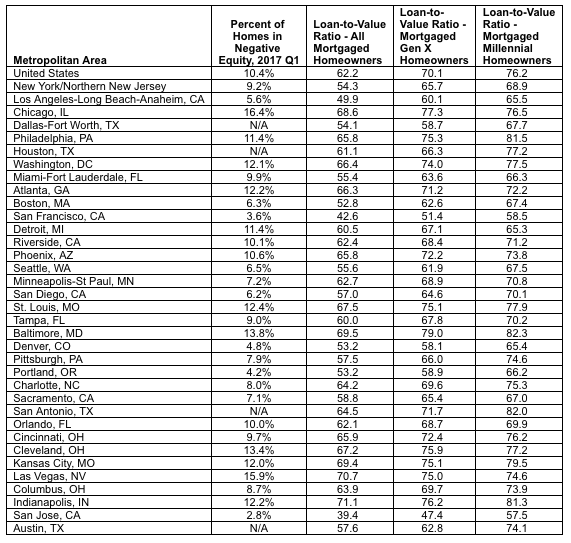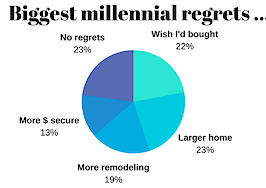- Trulia looked at the 100 biggest housing markets to determine which had the most empty rooms available for rent and which markets had the biggest need for housing.
Are millennials seeking housing and baby boomers with empty rooms to rent out a match made in heaven?
Trulia looked at the hundred largest housing markets in the country and crunched some numbers to figure out approximately how many empty bedrooms were in those markets, then looked at market rental rates to determine where these potential room-rental arrangement could be the most beneficial for both landlord and tenant.
It published the results today on the company blog in the post, “Boom-mates: How Empty Nesters Could Help Ease a Housing Shortage.”
What housing looks like for millennials and boomers right now
“We found tens of thousands of homes have nearly 3.6 million unoccupied rooms that could be rented out,” wrote Trulia in the post.
And in markets where millennials have trouble finding affordable housing, renting a single room instead of a one-bedroom unit “could save them up to $24,000 annually,” it added.
Multigenerational housing solutions are increasingly popular in other countries (like Europe), and “even here, many universities are now offering exchanges where older adults can rent extra space to budget-strapped students.”
Why go multigenerational?
“In addition to the financial benefits to both the younger and older generations, [multigenerational housing] relationships have been shown to have significant social and health benefits,” Trulia noted in its post.
“The increased social interaction has been observed to fight dementia and regulate blood pressure. Additionally, loneliness and social isolation has been attributed to an increased mortality risk, which shared housing would also mitigate.”
So there are reasons for empty nesters to consider bringing in a tenant besides cash flow; the companionship and increased social interaction are additional benefits.
And those rooms are also available, Trulia found. “In the top 25 rental markets, boomer homes have an average of 4.2 bedrooms, and only 2.6 household members. Discounting one bedroom for a guest room or office, there’s an average 0.6 extra bedroom per household that could be potentially rented out.”
How markets measure up
Not surprisingly, the financial benefits of “boommates” “vary by market based on inventory and market rental rates,” Trulia wrote.
Washington, D.C., has a “massive” demand for rentals, Trulia noted, “yet its rental stock has largely stagnated recently.” That’s why the loan-to-value ratio for all mortgaged homeowners is so high. “A spare bedroom can easily bring in $941 a month, the seventh-highest rental income we’ve projected,” Trulia wrote.
In fact, in general, “metros in Virginia and around the Washington area are the biggest places to look for empty nests,” the company said.
It added that the top five most profitable metros to rent out a room are:
- Boston and Cambridge, Massachusetts
- New York
- Oakland and San Francisco, California
Meanwhile, Tampa, Florida, “seems to have maximized its available home space” as only 2.1 percent of owner-occupied homes have potentially rentable spare rooms, even though demand for rental housing is high in the market. Still, “renting out a spare bedroom in Tampa would only have an estimated monthly income of $505,” Trulia calculated.
Overall, “we consistently found Florida ranking at the bottom for available bedrooms,” Trulia wrote. “In fact, Florida metro areas comprise four of the bottom five, and seven of the bottom 10 metro areas for available rooms out of the biggest 100.”
Methodology
Trulia used U.S. Census data on household inhabitants and bedrooms for the 100 largest metro areas. “We filtered for household heads over the age of 53 (1964 is last year of the baby boom generation), owner occupied residences, and non-multigenerational households,” the company explained.
It assumed that one bedroom might be regularly used as an office space or spare bedroom when calculating “available” bedrooms. “We compared the resulting count of homes with spare bedrooms to the total number of owner-occupied households within the metro to come up with our metric for share of homes with unoccupied bedrooms,” it wrote.
Then Trulia based rent estimates on a previous analysis, February’s Room for Rent report.













